Here’s a question that recently came in to PodCacher HQ from Sarah:
I am somewhat new at geocaching and will be celebrating my one-year anniversary this coming July. I would like to place my very first cache in celebration of this! My question is this – what advice do you offer newbie cache owners? What should I look out for? Any and all tips would be so greatly appreciated!
That’s a great question and it’s very commendable that you are taking the time to think about the process and have the desire to do it well. Here are some tips on how to hide a geocache.
First, get yourself prepared
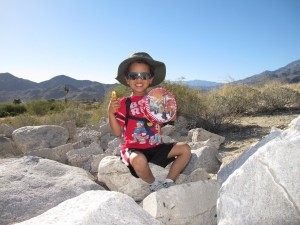 The BEST way to prepare to hide a geocache is to FIND geocaches. Some people want to mandate a specific number of finds before you can hide, but that number is a bit subjective. It’s more about the variety of different kinds of geocaches that you’ve found than the exact number. Finding geocaches will give you ideas for location, camouflage, SWAG, containers, etc. You’ll learn what makes an “OK” geocache and what contributes to a “WOW” experience. Be sure to find geocaches with a good number of favorite points as well. Sarah has been geocaching for a year and has about 175 finds (spread out over 7 different cache types), so she is well positioned for becoming a hider.
The BEST way to prepare to hide a geocache is to FIND geocaches. Some people want to mandate a specific number of finds before you can hide, but that number is a bit subjective. It’s more about the variety of different kinds of geocaches that you’ve found than the exact number. Finding geocaches will give you ideas for location, camouflage, SWAG, containers, etc. You’ll learn what makes an “OK” geocache and what contributes to a “WOW” experience. Be sure to find geocaches with a good number of favorite points as well. Sarah has been geocaching for a year and has about 175 finds (spread out over 7 different cache types), so she is well positioned for becoming a hider.
The next preparation involves understanding the responsibility to maintain your geocache. The cache owner’s job doesn’t end with hiding the geocache. You’ll need to be willing and able to check on your cache when there have been a string of DNF’s (did not find’s), the mention of a wet or full log, a note requesting maintenance, etc. A good geocache owner also knows and abides by the guidelines of the geocache listing site being used.
Plan your location
There are many factors that make a good geocache: location, creative container, theme, puzzle challenge, good SWAG, camouflage, the experience you give to the hider and more. When you’re just starting out, you don’t have to have all those aspects in your first geocache hide. You might want to focus on just one or two. We’d suggest looking at location and container.
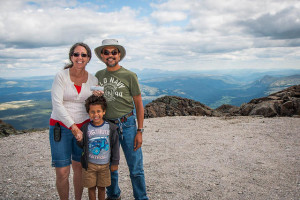 Pick a great spot for your geocache. Make it someplace you would enjoy going even if there was no geocache there. Find a hidden corner in a local park; head out on a hiking trail and keep your eyes open for a beautiful spot; think about a unique or surprising urban location in your town. Remember that your geocache must be at least 528 feet (161 meters) away from the nearest geocache. You can check out potential geocache locations by going to the “Hide a Geocache” page on Geocaching.com and clicking on “Create a New Geocache”. You’ll see a map with red circles that will help you identify a potentially available spot.
Pick a great spot for your geocache. Make it someplace you would enjoy going even if there was no geocache there. Find a hidden corner in a local park; head out on a hiking trail and keep your eyes open for a beautiful spot; think about a unique or surprising urban location in your town. Remember that your geocache must be at least 528 feet (161 meters) away from the nearest geocache. You can check out potential geocache locations by going to the “Hide a Geocache” page on Geocaching.com and clicking on “Create a New Geocache”. You’ll see a map with red circles that will help you identify a potentially available spot.
Important Note: If your location is on private property, be SURE to gain permission from the land owner first. On public lands, do the research to determine if a permit is necessary. Use common sense and make sure it’s not a location that could cause undue concern from muggles who happen to see a geocacher hunting for or replacing the cache.
Prepare your geocache
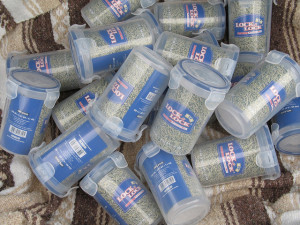 Now that you have a location, it’s time to create a good container. Choose something waterproof and durable. Clear containers are always a good idea due to the frequency of bomb scares, especially in urban areas. If you want to get crafty, break out the spray paint or camo duct tape and add some camouflage to your container. Clearly label the outside of the container to show it is a geocache.
Now that you have a location, it’s time to create a good container. Choose something waterproof and durable. Clear containers are always a good idea due to the frequency of bomb scares, especially in urban areas. If you want to get crafty, break out the spray paint or camo duct tape and add some camouflage to your container. Clearly label the outside of the container to show it is a geocache.
Stock the inside with the necessities:
A logbook or log sheets; a pen or pencil if there is room, some nice SWAG for those who like to trade, and possibly a small FTF prize. You can also download a note from geocaching.com to explain geocaching to someone who finds your container accidentally. Helpful tip: check out show 411 to learn all about SWAG – the good, the bad and the ugly!
Hide your geocache
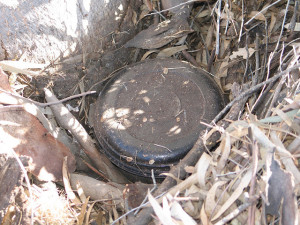 Go hide the container at the location you chose BEFORE you submit the listing (it might actually be approved quickly). While you’re there, obtain good coordinates for the location. This is a very important step! Preferably use a GPS that has waypoint averaging. You can also use the manual approach by marking a waypoint, walking away and then returning to mark a new waypoint. Repeat this a number of times and then use the average of your waypoints.
Go hide the container at the location you chose BEFORE you submit the listing (it might actually be approved quickly). While you’re there, obtain good coordinates for the location. This is a very important step! Preferably use a GPS that has waypoint averaging. You can also use the manual approach by marking a waypoint, walking away and then returning to mark a new waypoint. Repeat this a number of times and then use the average of your waypoints.
Announce it to the world!
It’s now time to list your geocache. If you are listing at geocaching.com, just follow the steps that walk you through the process. It might be a good idea to think through what you want to say in the description ahead of time so you’ll be ready to build the page. Don’t forget to add helpful attributes to inform other geocachers about this location (i.e. is it kid friendly? can you bring a dog? is it a long hike? is there parking nearby?)
Finally, wait for the email that lets you know your geocache has been approved so you can do your “happy dance”; and then have fun reading the logs as they come in, thanking you for your contribution to the game!
One last TIP
Here’s a great idea. Seek out a local geocaching mentor. There are a lot of geocachers who LOVE to share their knowledge and would be happy to walk you through the steps of hiding your first geocache. You could ask around at the next geocaching event you attend. If your local caching community has a forum or social media page, you could post a request there. Another idea is to find a geocacher whose caches you have really enjoyed and send them a message via geocaching.com. Make an effort to reach out and ask in one of these ways, and you just might make a great new geocaching friend.
There are some details that we skimmed over, and of course there are more complicated geocaches to hide, like a puzzle cache, earthcache or wherigo. But these tips should get you started with a traditional geocache. Welcome to the world of cache hiding. Enjoy!!
The post How to Hide a Geocache appeared first on PodCacher: Geocaching Goodness.
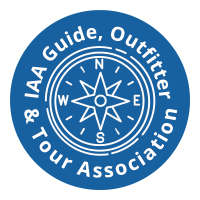
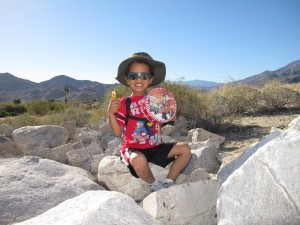
Recent Comments